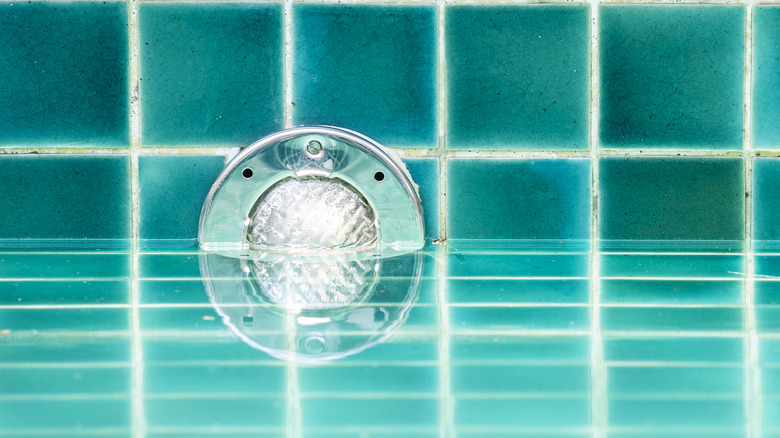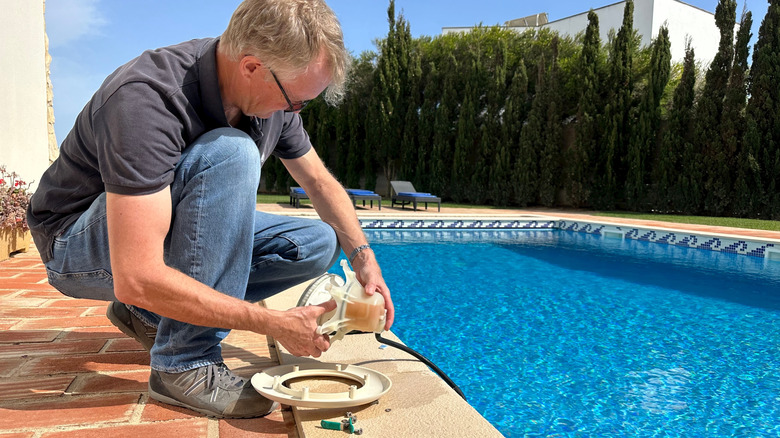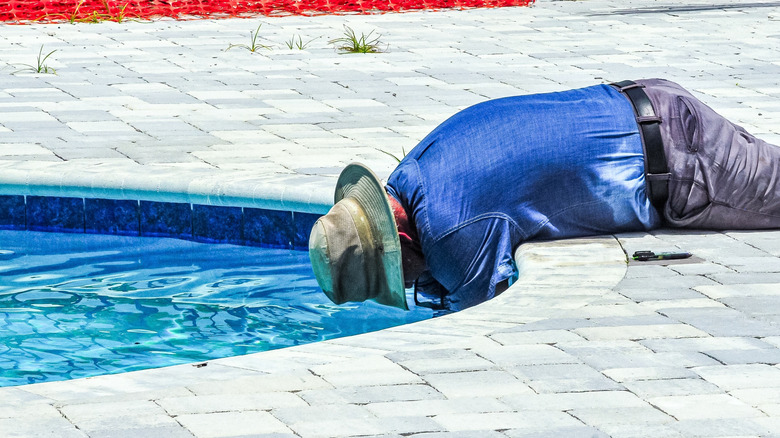How To Safely Replace A Pool Light (& Dangerous Mistakes To Avoid)
How many DIYers does it take to change a light bulb? Wait, before you answer, we left a word out. How many DIYers does it take to change a light bulb... underwater?
The reason this is such a challenge, of course, is the combination of water and electricity. You might need to replace a pool light if the bulb is burned out, if an LED driver has gone bad, or if you're converting old-style incandescent bulbs to LED to make your swimming pool more energy efficient. While there's nothing particularly convoluted about replacing a swimming pool light, there are a few special considerations. The first is that you might not have a lot of experience with this aspect of pool maintenance. The second is that it can be extraordinarily dangerous. That's why Hunker spoke exclusively with Jimmie Meece, President of America's Swimming Pool Company, about the ins-and-outs of replacing a pool light safely.
"Replacing a pool light is a task that requires careful attention to safety because you're working with electricity around water," Meece said. "If you're unsure about any part of the process, it's always best to consult a professional to avoid risks." But it can be done, if you're careful to follow each step carefully, observe all safety precautions, and always keep in mind that your goal is to avoid going from one DIYer to zero in the middle of the task. It's a good goal.
Always shut off the circuit breaker before you replace a pool light
Think of how many times you've left out a screw or accidentally started swapping a light switch or receptacle before turning the power off. You don't have the luxury of any such mistakes when replacing a pool light, and so the first step is a predictable one. As explained by pool expert Jimmie Meece in his exclusive interview with Hunker, "Shut off the power to the pool light at the circuit breaker and use a multimeter to ensure no electricity is flowing. This step is non-negotiable to avoid serious injury or electrical shock." Check the power at the switch and the pool light junction box, which is used to tie into the electrical wiring from the switch. Newer equipment converts 120v AC mains power to much safer 12v DC, but if you're not sure where that transformer is, treat every wire like it might be carrying mains voltage.
Next, have a look at everything you plan to handle, open, close, replace, or test. Because of the corrosive effects of water and its habit of infiltrating everywhere it's given a chance to, everything must be in good shape or be replaced. "Carefully inspect the fixture, including the bulb, wiring, and gasket," Meece said. "Replace the gasket to ensure a watertight seal and check for any signs of corrosion or damage that could compromise safety or functionality."
Finally, make sure everything went well. Submerge the new light's fixture in water to make sure it's sealed properly. "Once verified," Meece said, "securely reattach the fixture to the pool wall, ensuring it is watertight and correctly positioned."
Mistakes to avoid when replacing a pool light
So, where might it all go wrong? Aside from making sure the circuit isn't powered, there are a few other potential trouble spots to keep an eye on. One is to avoid damage and hazards by making sure you use the correct replacement bulb or fixture type, wattage, and size. When Hunker spoke exclusively with Jimmie Meece, President of America's Swimming Pool Company, he emphasized that it's important to check the manufacturer's specifications to ensure you're using the correct light replacement.
Skipping over the gasket replacement is also a mistake. The original gasket might be deteriorating from age or exposure to the elements, and it might be invisibly damaged during the replacement process. "The gasket ensures a watertight seal, preventing water from entering the fixture," Meece said. "Reusing an old or damaged gasket can lead to leaks, which may cause the light to fail or create a short circuit."
Meece's final warning might be the most difficult of all to heed: Don't ignore signs of corrosion or damage. It's not uncommon to reuse a room light with a cracked globe, worn wiring, or even old signs of water damage, but you simply can't do that when replacing a pool light. "Corrosion or cracks in the fixture can compromise its safety and function," Meece said. "Inspect the fixture thoroughly and replace any damaged parts to avoid electrical issues or water leaks in the future."


